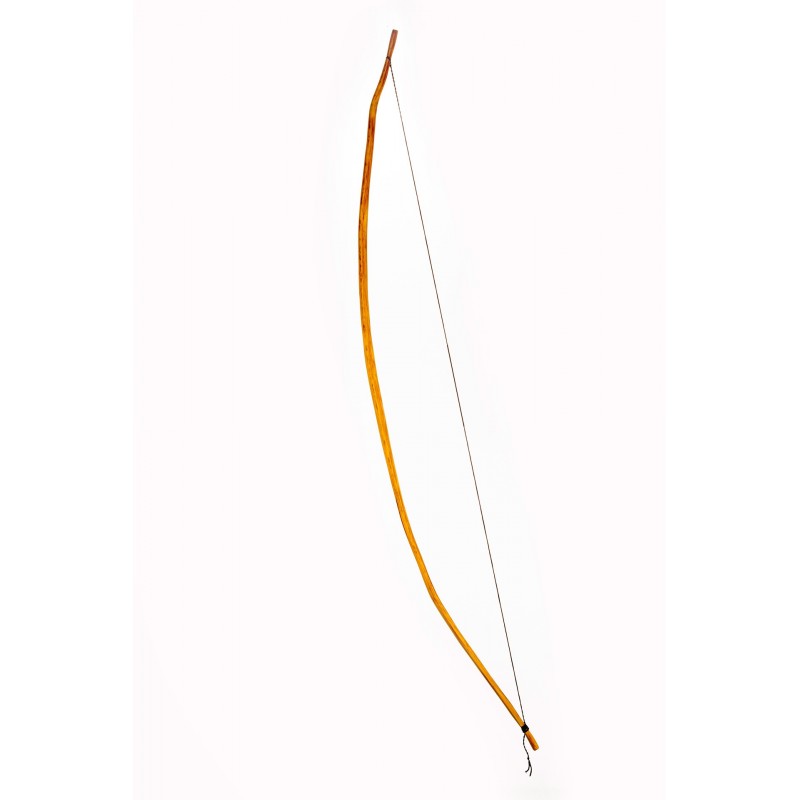The Viking Bow
The Viking Bow – Archery of the Norseman
This article discusses the Viking bow and Viking archery. The Norsemen had developed a unique self bow of their own, and put it to use in large-scale battles. A considerable amount of art, writing, and archeological finds lead us to the conclusion that archery did in fact play an important role in Viking life. The Viking bow was a self-bow, yet a horn bow like those of the Eurasian nomads was known to the Vikings.
The Vikings swept outwards from their Scandinavian homelands in the 8-11th century AD. They were part of the last wave of pagan invaders to terrorize Christendom. The other pagan threats came from the Moors of North Africa and the Magyars from the East. Modern military history tends to focus on the melee combat prowess of the Vikings, yet archery, and the Viking bow, as we shall see, cannot be overlooked.
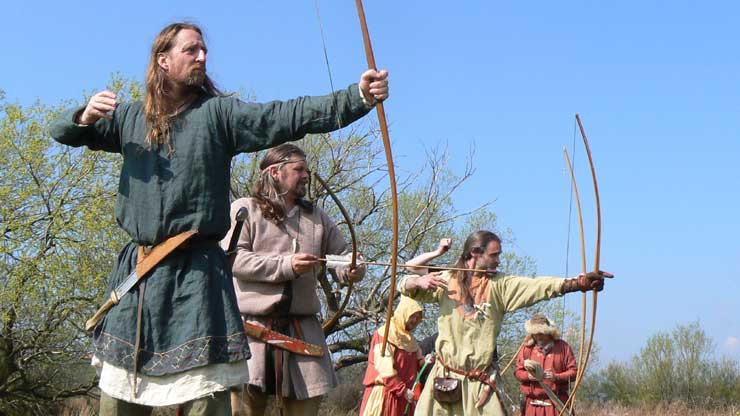
The Viking Bow in Writing – The Sagas
Sagas were poetic historical stories, composed in Iceland mainly during the middle ages. Some notable mentions of Viking archery in the sagas are:
Njáls saga: Written in the 13th century A.D., the Njáls saga recounts events between 960 and 1020. The main character, a fierce warrior by the name of Gunnar Hámundarson manages to hold off a numerically superior foe at his home. This is done primarily with the use of his bow and arrows.
Óláfs saga Tryggvasonar:
One of several sagas on the Norwegian king Óláfs Tryggvasonar. Óláfs was a mighty king, who was instrumental in bringing Christianity to Norway. His rise to power had concerned and angered many of his neighbors, who would become his enemies. An intriguing part of the saga details the fierce Battle of Svolder.
King Óláfs is ambushed and outnumbered at sea by his rivals. He binds his 11 longships together, with his personal warship The Long Serpent in the center. The enemy ships, by most accounts, are about 70. King Óláfs fights valiantly but the enemy is gradually taking his ships and making their way to the central vessel.

One of Óláfs trusted men, Einar Eindridesson Thambarskelfir is well known as an expert archer. He tries to pick off the high-ranking enemies on their ships with his mighty Viking bow. The enemy archers take notice and commence returning fire. While at full draw, Einar’s bow is shot and it cracks into pieces.
King Óláfs then throws Einar his bow, but as Einar draws it, he is able to draw the arrowhead much farther back than the bow.
No! not quite so much as that,” says the king; “take my bow, and shoot,” flinging the bow to him.
Einarr took the bow, and drew it over the head of the arrow. “Too weak, too weak,” said he, “for the bow of a mighty king!” and, throwing the bow aside, he took sword and shield, and fought valiantly. – Snorri Sturluson, 1907; see: Heimskringla. The Online Medieval & Classical Library.
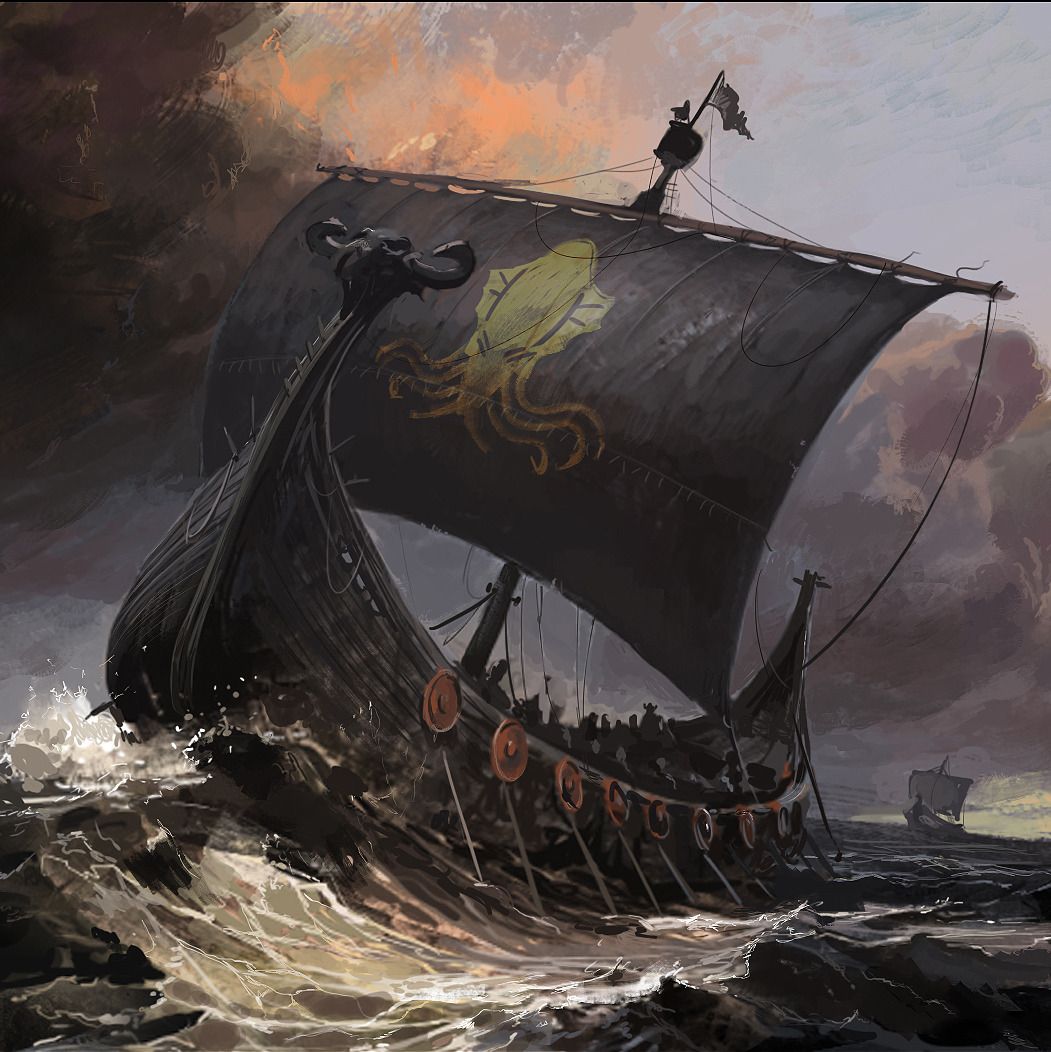
The Viking Bow and Composite Bows
Although the Viking bows found in the archeological record were self bows, made from a single stave of wood, other bows have been mentioned in literature. It seems as though the Vikings of the medieval age were quite familiar with composite bows.
The Konungs skuggsjá, a Norwegian text from around the year 1250 deals mainly with politics and philosophy. It was apparently written for the Norwegian king Magnus Lagabøte as part of his formal education. The book is divided into 70 chapters and 3 main sections. Chapter 38 is especially interesting as it pertains to our study of Viking archery. The chapter is titled “weapons of offense and defense” and it mentions the term “hornbogi”. It is described as a shorter bow that is ideal for mounted archery.
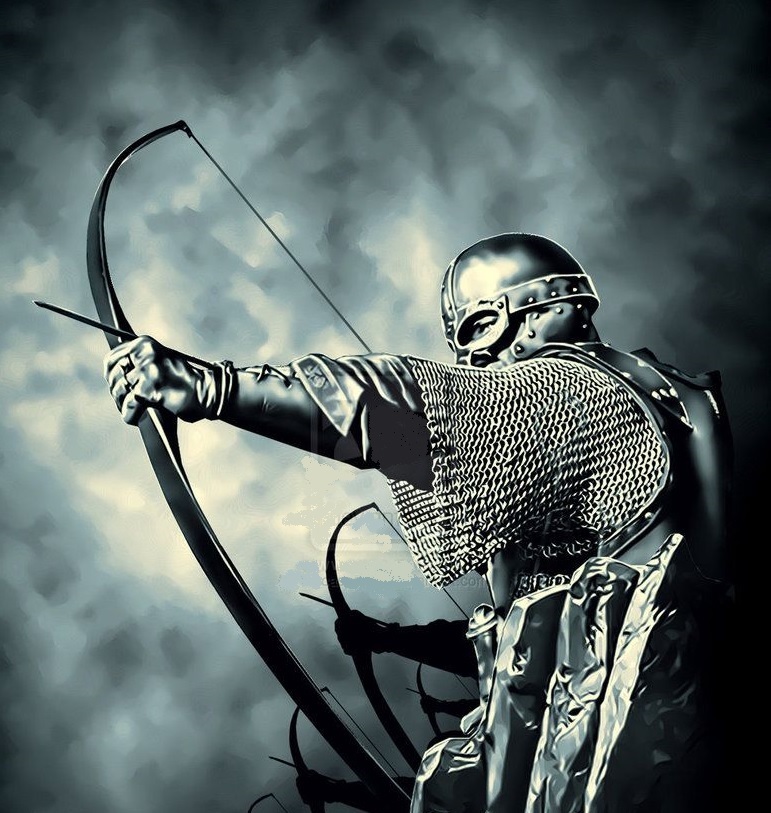
The Vikings, being a seafaring people, with vast maritime trade routes and commercial connections with many merchants from mainland Eurasia, could have very easily come into contact with the Asiatic composite bows of the steppe by the 13th century. Viking’s interest in commerce, as well as warfare, would have certainly drawn the attention of the Vikings if they were to be exposed to the composite bows of the steppe.
The Viking Bow and the Law
Icelandic legal texts give a common unit of measure as ördrag which may be translated as “bowshot”. A later amendment to Grágás, an Icelandic legal text compiled after the Norse period describes an ördrag as roughly two hundred faðmar (about 480m). This is certainly at the limit of the distance traditional bows are able to perform. Fortunately, for the student of history and archery, there are some archeological remnants of various bows discovered which we will discuss in the following sections.
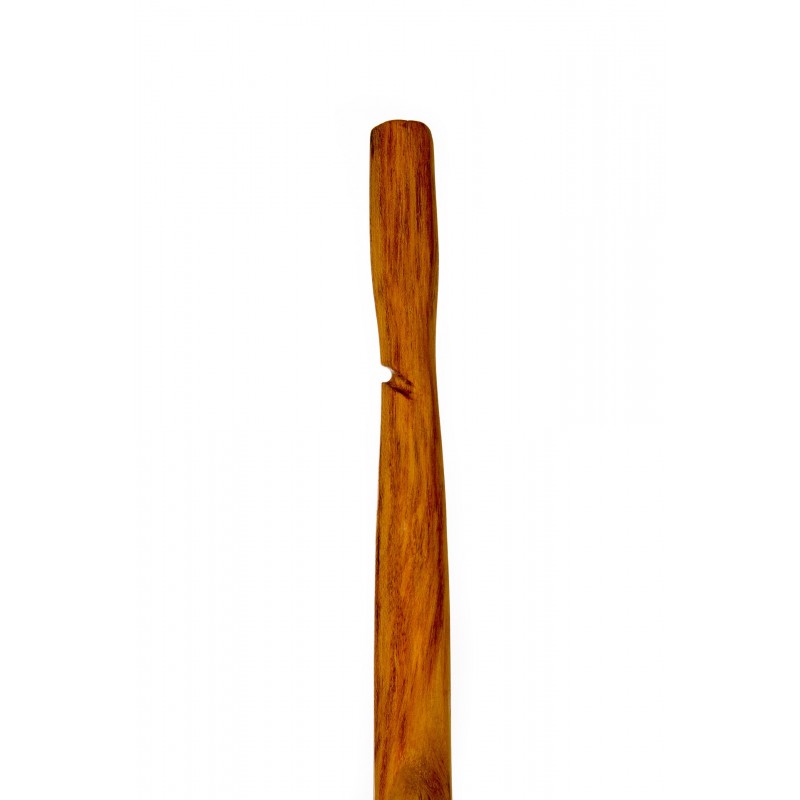
The Viking Bow Unearthed – Archeology
The Vikings had buried their dead with several artifacts, tools, and weaponry that give us a glimpse into the world of the feared Norseman. Of particular interest are several bows that were found in former Viking lands, or in lands where they frequently raided and/or traded.
The Viking Bow: The Ballinderry Bow, Ireland
The Irish had seen Viking raids in the 8th century that continued well into the 9th century A.D. The site at Ballinderry was known and excavated in 1932. The Ballinderry bow as well as several other military artifacts including a sword, knives, and spearheads were recovered.
The bow may be considered an early “longbow”, as it is made of yew (Taxus baccata), is approximately 190 cm long (6.2 feet), and is made into a “D” cross-section. The Ballinderry bow, like later English longbows, has a hard inner heartwood on the belly, with much more elastic sapwood on the back of the bow.
The bow itself was nearly fully intact, with about 5 cm of material missing from one end. The fully intact end has a shallow (5 mm) nock on one side of the bow. This is an unusual feature with historical and traditional bows, which typically have symmetrical nocks in the bow ends.
The Hedeby Bow Germany/Denmark
An important Viking trading town located on the Jutland Peninsula, Hedeby or Haithabu in German preserved many artifacts from the height of the Viking age. It was, in fact, the second-largest city in the Viking Age and the oldest city in Denmark until it was ceded to Germany in 1864. Archeological work on the site began in 1900.
A museum was opened next to the site in 1985 which houses many interesting historical objects. These include day to day utensils like cookware and cutlery, as well as military hardware which includes:
- axes
- swords
- spears
- arrowheads
- bow – The Hedeby Bow!
The Hedeby bow is made of yew with the classic “D” cross-section and measures 191 cm in length. Both the Hedeby and Ballinderry bow is made from yew. A small notch is cut into one side of the upper limb and a type of knot system was used to tie the string to the lower limb.
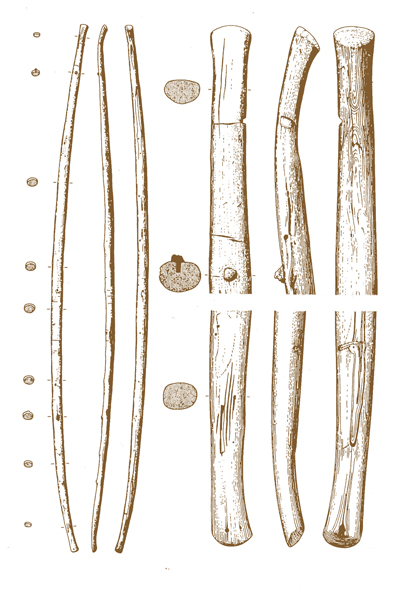
CHECK OUT THE MUSEUM IN HAITHABU

The Viking-Age settlement at Birka in Sweden
This particular settlement was founded around the year 750 A.D. and was a very important trading town in northern Europe. Traders from Byzantium and other middle eastern areas were known to have brought their wares to this area. It is one of the earliest towns/settlements in Sweden.
Of particular interest in the study of archery are the bone fragments and other archery related accessories that were found at the site. They were all related to archery and archery styles that were common on the Eurasian steppe, not northern Europe. Several bone plates were unearthed that were used to reinforce composite wood-horn-sinew bows. The arrowheads discovered at this site also bear the distinctive shape of late Hunnic, Avar and Magyar arrows. The archeological evidence suggests there may have been trading in arms between the Vikings of the north and riders of the steppes.
The Viking Bow in Art & Illustrations
Some medieval artwork depicting the Vikings and their descendants in action with their bows and arrows can give us a clue on the shape and features of the Viking bow.

The Viking Bow & The Bayeux Tapestry, Battle of Hastings
When William Duke of Normandy crossed the English channel in 1066 to contend for the English throne, he was accompanied by many archers. The Bayeux Tapestry, which depicts the events of 1064-1066 including the battle of Hastings, shows William’s archers in action. Their bows bear a great resemblance to the bows unearthed by archeologists at a later time.
BUY A VIKING BOW
CHECK OUT THE VIKING BOW BY FLAGELLA DEI, CLICK IMAGE FOR LINK:
VIKING BOW REVIEW, VIKING BOW BY FLAGELLA DEI
Want to Dive Deeper into Viking Archery and the Viking Bow?
We would highly recommend you check out Dan Høj’s book: Bows and Arrows of the Vikings. It is an absolutely thorough examination of the Viking bow and Viking archery. Dan has many years of experience in constructing Viking bows and put in his good work and time into the topic.
250 illustrations, 60 Photos and 224 pages.
- How to make your own bows & arrows
- Contemporary Illustrations
- Archaeological finds
- Prehistoric Poisoned Arrows
- Nordic Bow Woods
- The Nature of Wood
- Relevant Physics
- Tools
- Making a longbow
- Good Advice
- Bow measurements
- The Bowstring
- Making wooden Arrows
- Viking Bow Accessories
- Instinctive Archer
- Shooting a longbow
- Plausible reasons for poor shooting
- Safety precautions
- Good Advice
- Shield shooting experiments
- Glossary of Archery

Order Via Email:
Bows & Arrows of the Vikings, Dan Høj, Liljebjerget, Museum of Southwest Jutland, Ribe, 2019
ISBN 87-89827-72-4, 224 pp.
Send order to – museum@sydvestjyskemuseer.dk
Price: $29.50; €26, DKK 195. + shipping
